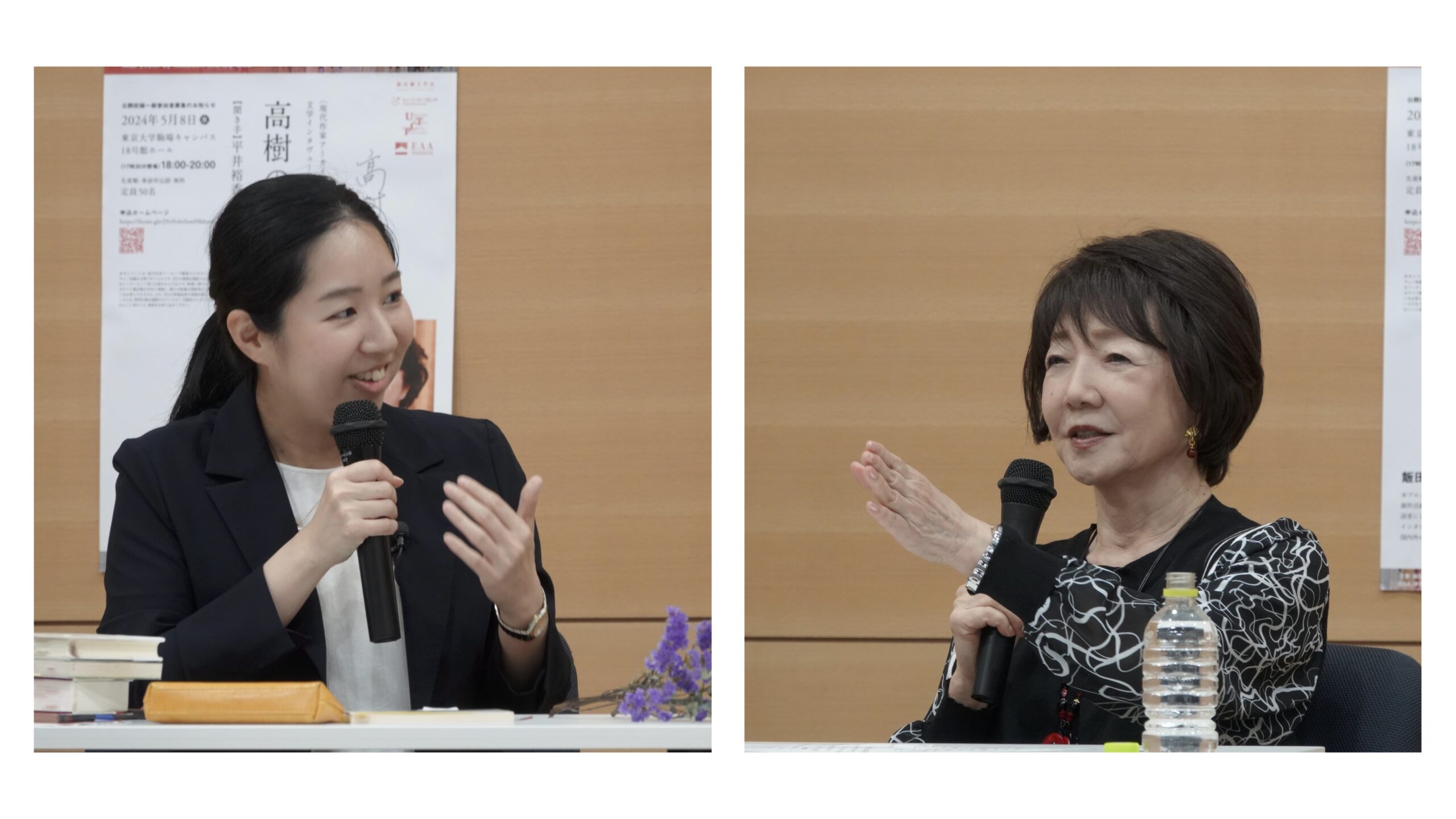On May 8, 2024, the 29th session of “The Archives for Interviews with Contemporary Writers” took place at the University of Tokyo, organized by the Iidabashi Literary Club in collaboration with the University of Tokyo Humanities Center, UTCP, and EAA. The guest speaker was the contemporary author Ms. Nobuko Takagi, and the interviewer was Prof. Yuka Hirai, a lecturer at Ferris University. The interview revolved around Ms. Takagi’s masterpieces: Hikari Idaku Tomoyo(『光抱く友よ』) (1984), Tomosui(『トモスイ』) (2011), and Shosetsu Ise Monogatari Narihira(『小説伊勢物語 業平』)(2020).
First, Ms. Takagi explained the theme of Hikari Idaku Tomoyo. She said that during this period the theme of her novels was the “suffering of individuals who harmed others and rebirth from pain,” which was connected to her own experience of divorce and the resulting separation from her son.

Prof. Yuka Hirai Ms. Nobuko Takagi
Second, Ms. Takagi read from Tomosui. She emphasized the importance of the rhythmic structure of the text. She is currently involved in a project called “Reading with the Ears,” in which people appreciate stories with their ears, rather than reading with their eyes. This focus on rhythm was carried on when she wrote Shosetsu Ise Monogatari Narihira.
Finally, with regard to Shosetsu Ise Monogatari Narihira, Ms. Takagi discussed the difference between modern translation and novelization. Shosetsu Ise Monogatari Narihira is a novelization of The Tales of Ise, a famous literary work in the Heian period. As a novelist, she tried to describe a personality of Ariwara Narihira, who wrote The Tales of Ise and was the main character in it.
Report by NIIMOTO Konomi (EAA Research Assistant)
Photo by CHIN Chunwah (EAA Research Assistant)








